Wild Boar of Florence
Introduction
Author-Uploaded Audio
Local historian Bill Worley gives a brief description about The Boar.
Text-to-speech Audio
The Wild Boar of Florence is a life-sized bronze statue depicting a mythological Greek boar that was cast using a plaster mold dating back to 1612. The original bronze statue, nicknamed il Porcellino (the small pig), was turned into a fountain and showcased in a public market in Florence, Italy in 1640. The fountain became a symbol of good luck as one would place a coin in his mouth and rub his snout. The statue at this site on the Country Club Plaza is one of the early replicas done by the foundry of Ferdinando Marinelli out of Florence and was brought to Kansas City by the Nichols family in 1962. It pays tribute to the traditions of il Porcellino while giving back to the community, as a plaque next to the statue reads, “With Good Fortune For Your Children And The Children of Mercy Hospital. Rub His Nose - Drop A Coin."
Images
The Wild Boar of Florence bronze replica rests at the Country Club Plaza
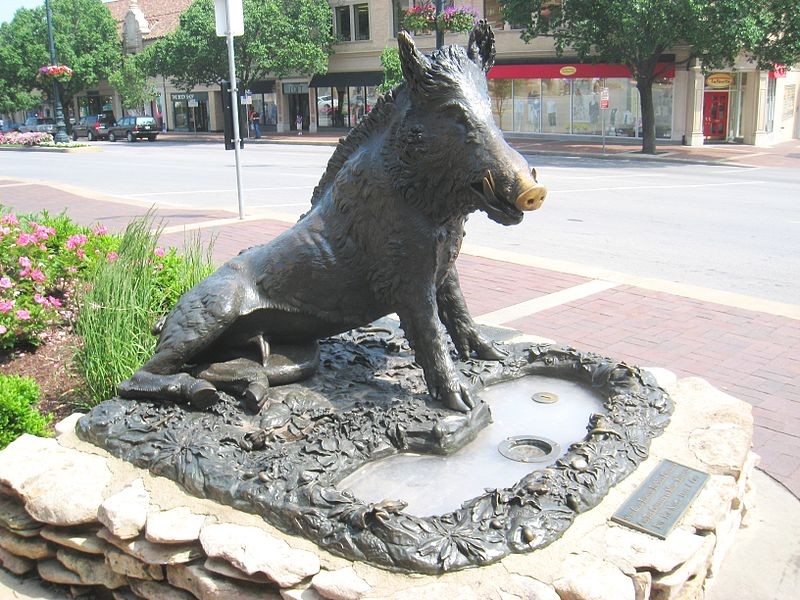
A historical marker describes the history of the Wild Boar of Florence
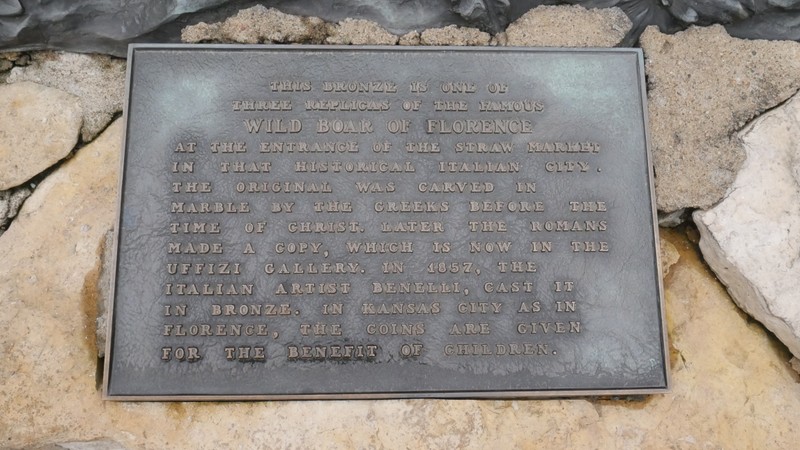
A plaque of good fortune suggests bystanders to "Rub His Nose - Drop A Coin" to be donated to Children's Mercy Hospital
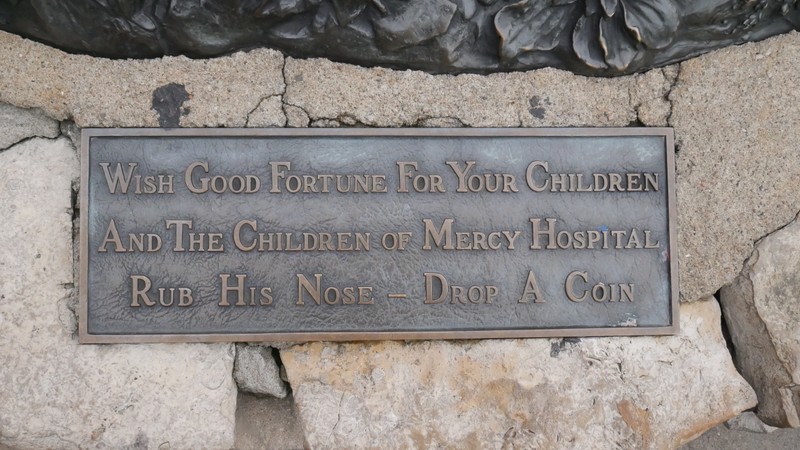
A photo of the Bronze Boar in Florence's New Market c.1905
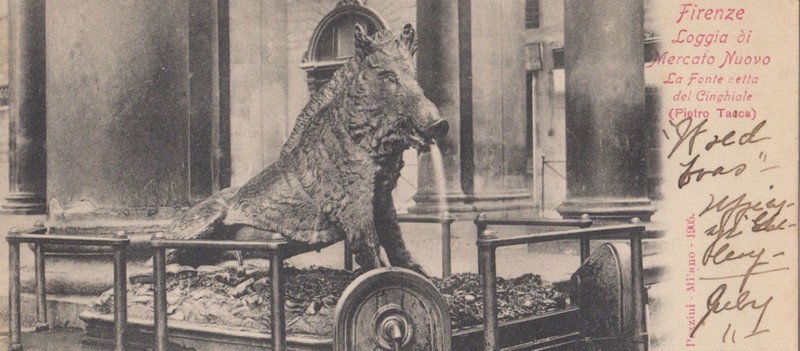
The Italian marble boar sculpture housed at Uffizi Gallery in Florence, Italy
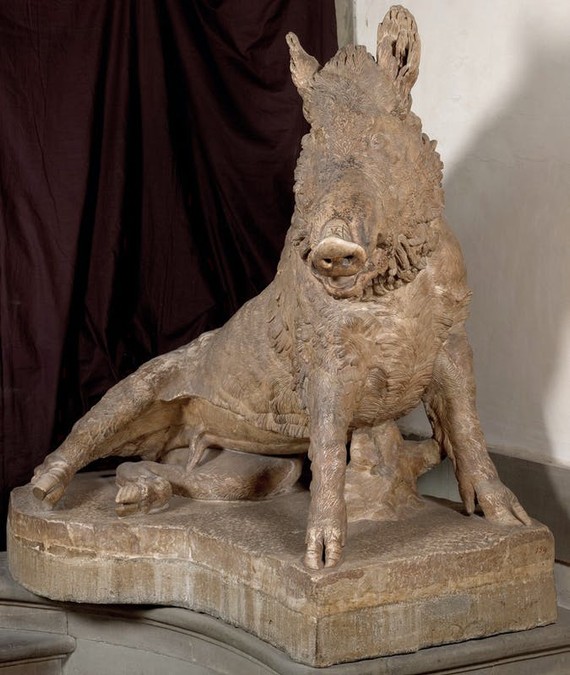
Damage done to the snout of the bronze boar in Florence, Italy
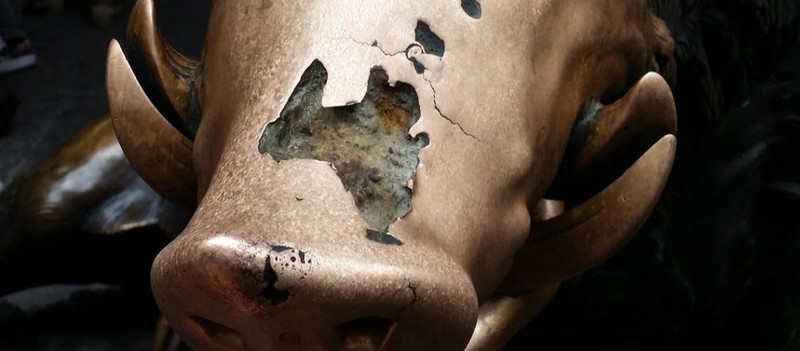
Artists replaced a piece of the snout of the bronze boar in Florence due to damage from tourists.
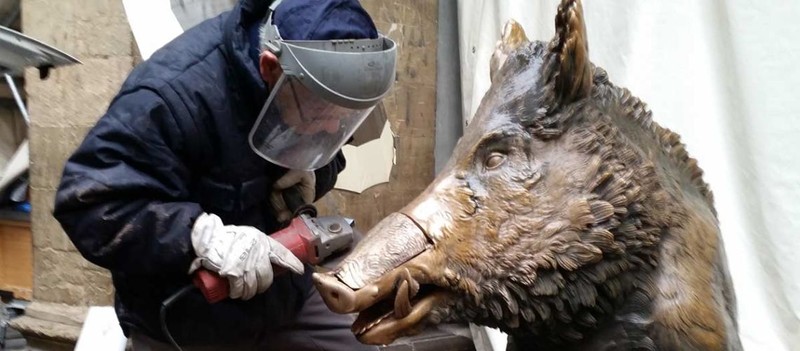
Backstory and Context
Text-to-speech Audio
The Wild Boar of Florence is a bronze statue depicting a mythological Greek boar with a history dating back centuries. The original bronze artwork is thought to have been made by the Greeks in the Hellenistic period (300-200 B.C.), which was an inspiration for a marble statue excavated from Rome in 1556. This marble boar was gifted from the Pope to the Grand Duke of Tuscany Cosimo I de Medici and taken to his home in Florence, Italy. Years later, Medici’s nephew ordered a bronze replica from Italian sculptor Pietro Tacca. Tacca first executed a mold in 1612 before casting it in bronze in 1633. In this mold, the base was sculpted simulating a forest floor with grass, reptiles and insects, in which the boar would be resting on. Medici’s marble statue was moved and is now housed in the Uffizi Gallery in Florence, Italy.
It was decided in 1640 that the bronze boar be turned into a fountain for the population of Florence and was installed in Loggia del Mercato Nuovo, the New Market. It was immediately nicknamed il Porcellino, meaning the small pig. Il Porcellino became an admired symbol as coins were put in his mouth for good luck and a legend created in which those who rubbed his snout would return to Florence. As the number of tourists increased, so did the damage to the snout and base. Due to years of human contact and running water, the fountain was subject to damage. In 1857, Italian artist Giuseppe Benelli of the foundry of Clemente Papi brought the bronze back to its original state with wax, called the lost wax technique, and a mold was cast. A second bronze replica was made and replaced the deteriorated boar. Another replacement was ordered in 1998, in which the foundry of Ferdinando Marinelli cast the new bronze boar using the original Tacca plaster mold that is stored in their collection. Many repairs have been done since, including a piece of replacement cast bronze on the snout.
While there are dozens of replicas around the world, one of the early reproductions from Marinelli foundry is displayed on the Country Club Plaza in Kansas City, Missouri. Brought over by the Nichols family, who has a history of favoring European and mythological art, The Bronze Boar of Florence was installed on the Country Club Plaza and dedicated on April 28, 1962. The statue sits on a limestone pedestal with an acrylic panel containing a coin slot, based on the belief of tossing coins in fountains for good luck. With intention to donate the proceeds to Children’s Mercy Hospital and in keeping the tradition of il Porcellini, a plaque beside the bronze reads, “With Good Fortune For Your Children And The Children of Mercy Hospital. Rub His Nose - Drop A Coin”.
Sources
Bronze Boar, City of Fountains. Accessed November 24th 2021. https://www.kcfountains.com/single-post/2016/10/15/bronze-boar.
The "Porcellino" of Florence, Galleria Pietro Bazzanti & Figlio. Accessed November 24th 2021. https://www.galleriabazzanti.it/en/il-porcellino-di-firenze/.
Boar, Le Gallerie Degli Uffizi. Accessed November 24th 2021. https://www.uffizi.it/en/artworks/boar.
https://commons.wikimedia.org/wiki/File:Country_Club_Plaza,_KC_MO_-_statue_1.JPG
https://www.hmdb.org/m.asp?m=88241
https://www.kcfountains.com/single-post/2016/10/15/bronze-boar
https://www.galleriabazzanti.it/en/il-porcellino-di-firenze/
https://www.uffizi.it/en/artworks/boar
https://www.galleriabazzanti.it/en/il-porcellino-di-firenze/
https://www.galleriabazzanti.it/en/il-porcellino-di-firenze/
